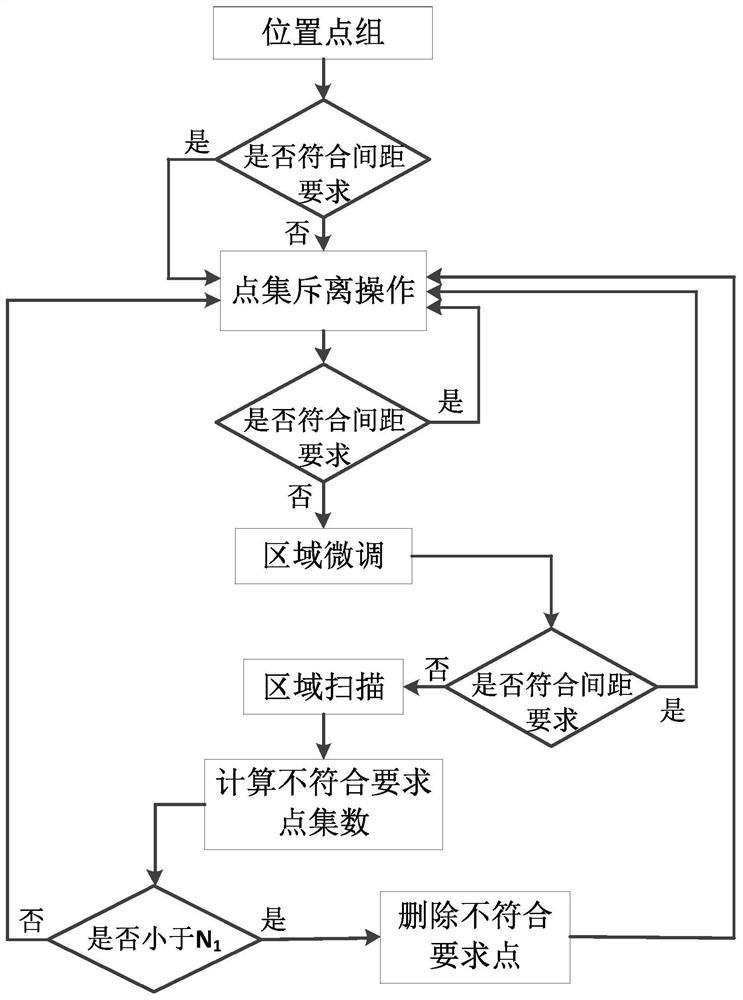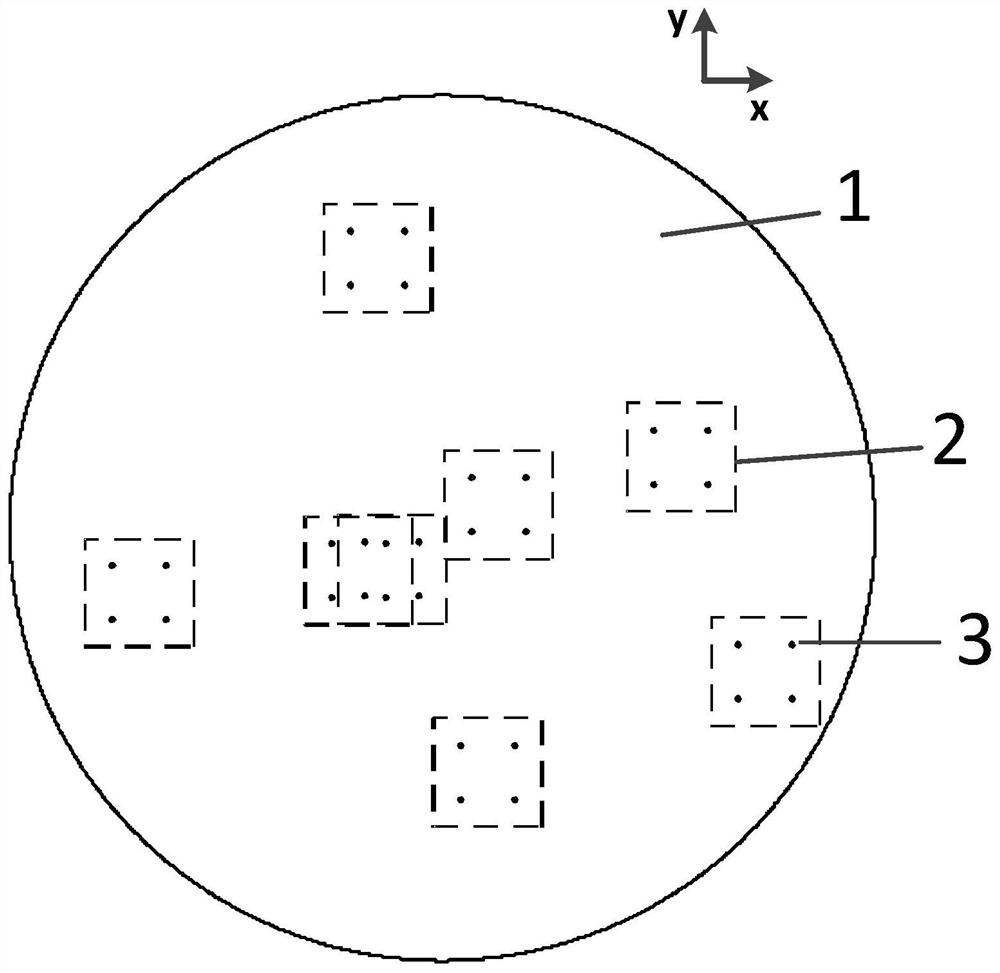Discretized region scanning subarray-level sparse optimization method and system
An area scanning and sparse optimization technology, applied in the field of array antenna design, can solve the problems that the minimum distance is difficult to meet the distance limit conditions, the ultra-large-scale array does not have engineering realization, and the effective point group is low, so as to save processing time and improve the obtained results. The probability of the optimal solution, the effect of increasing the effective ratio
- Summary
- Abstract
- Description
- Claims
- Application Information
AI Technical Summary
Problems solved by technology
Method used
Image
Examples
Embodiment 1
[0066] This embodiment provides a subarray-level sparse optimization method for discretized area scanning, and finally obtains the subarray distribution of the optimal sparse array and the array pattern at the time of the lowest sidelobe.
[0067] Such as figure 1 as shown, figure 1 It is the flow chart of the method for discretized area scanning subarray-level sparse optimization in this embodiment. The array antenna to be optimized has a circular aperture and a radius of R. The array arrangement adopts the form of subarrays. The minimum distance between subarrays that do not overlap is D. 0 , the number of sub-arrays is N 0 .
[0068] The method includes the following steps:
[0069] S1: Initial population discretization
[0070] A discrete position point group is randomly generated, and the position point group contains the initial position information of all subarrays.
[0071] Specific steps are as follows:
[0072] (11) Establish a coordinate system on the plane w...
Embodiment 2
[0093] In this embodiment, the performance of the circular aperture array antenna pattern is optimized, and the frequency point to be optimized is 5 GHz. Set the x-axis and y-axis as image 3 shown. The radius of the circular aperture to be optimized is 200mm, the size of the sub-array is 2*2, and the cell spacing in the sub-array is 30mm; the number of sub-arrays to be optimized is 8, and the minimum spacing between the sub-arrays is 70mm. The sub-array radius fine-tuning interval is 0.2mm, and the number of fine-tuning points is 50; the angle fine-tuning interval is 0.2°, and the number of fine-tuning points is 200. The subarray radius scanning interval is 0.5mm, and the number of scanning points is 200; the angular scanning interval is 0.5°, and the number of scanning points is 720. The direction pattern to be optimized is the normal φ=0° cut plane, and the target side lobe is -20dB. During the optimization process, the parameters to be optimized consist of the position ...
Embodiment 3
[0097] In this embodiment, the performance of the pattern of the large-sized circular aperture array antenna is optimized, and the frequency point to be optimized is 3.5 GHz. Set the x-axis and y-axis as Image 6 shown. The radius of the circular aperture to be optimized is 3m, the size of the sub-array is 4*4, and the cell spacing in the sub-array is 42mm; the number of sub-arrays to be optimized is 50, and the minimum spacing between the sub-arrays is 245mm. The sub-array radius fine-tuning interval is 0.5mm, and the number of fine-tuning points is 400; the angle fine-tuning interval is 0.2°, and the number of fine-tuning points is 200. The sub-array radius scanning interval is 1mm, and the number of scanning points is 2000; the angular scanning interval is 0.5°, and the number of scanning points is 720. The direction pattern to be optimized is the normal φ=0° cut plane, and the target side lobe is -20dB. During the optimization process, the parameters to be optimized are...
PUM
 Login to View More
Login to View More Abstract
Description
Claims
Application Information
 Login to View More
Login to View More - R&D
- Intellectual Property
- Life Sciences
- Materials
- Tech Scout
- Unparalleled Data Quality
- Higher Quality Content
- 60% Fewer Hallucinations
Browse by: Latest US Patents, China's latest patents, Technical Efficacy Thesaurus, Application Domain, Technology Topic, Popular Technical Reports.
© 2025 PatSnap. All rights reserved.Legal|Privacy policy|Modern Slavery Act Transparency Statement|Sitemap|About US| Contact US: help@patsnap.com



